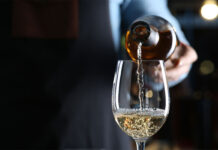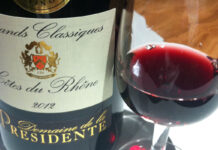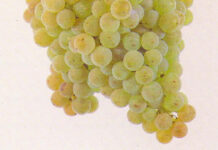Luke Richardson is a sommelier who has worked in a range of venues across the UK in a career spanning more than 20 years. In his column for SLTN he shares his thoughts on all things wine-related and answers your questions about wine. If you have a question for Luke email it to sltn@peeblesmedia.com

Hi again all… this month I thought I would talk about the fascinating subject of pricing.
OK, OK, it really isn’t that exciting, but it is nonetheless obviously very important!
Whilst it is a great idea to be in complete control of your theoretical and actual gross profit margins, there are still some important little tricks to help boost your figures when it comes to wine.
The simplest way to do this is to have a formulaic approach to how you price your wines by the glass.
For example, if you want to sell a bottle of wine at £24, and you sell wines by the glass at 175ml and 250ml serve sizes, you would want to sell the 175ml at around £6.50 per glass, and the 250ml at around £8.80. This uses a formula of roughly a 15% increase in cost per bottle by volume for a 175ml glass, and 10% for a 250ml glass.
Although this doesn’t sound like a lot, it can have a dramatic effect on your overall GP margin.
Let’s have a look at how that works…
So, the bottle that you sell for £24, let’s say it costs £6 + VAT, for the sake of easiness. If you sell the bottle at £24, you make 70% GP – fair enough. But if you sell the bottle in 175ml increments, at £6.50 a glass, that achieves (4.28 x £6.50) £27.82, which is equivalent to 74.12% GP.
If you sell it as 3 x 250ml glasses at £8.80 each, that brings £26.40, which is equivalent to 72.73% GP.
There are several aspects to consider with this approach – mainly, the more glasses you serve out of a bottle the more work it is for your staff and time equals money so that is already a good justification for the increased cost!
So, in brief, here is how you should approach pricing for your wine by the glass offering.
1. Always make sure that your bottle price is already achieving your required GP margin – and use the extra GP gained from selling the wine by the glass either as a boost or to cover any wastage or little tasters you may give out.
2. For the price of a 175ml glass, take that bottle selling price, and multiply by 115%, then divide by 4.28 (the number of 175ml glasses in a bottle).
3. For the price of a 250ml glass, take the bottle price and multiply by 110% and then divide by 3 (the number of 250ml glasses in a bottle).
It may not seem like a lot, but it really adds up over a year.
And as all our costs go up, ways to make extra margin are becoming harder and harder to find!
Until next time, happy pricing! Cheers 🙂



















